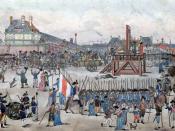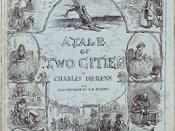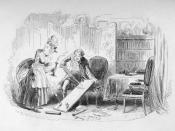Executions
In Charles Dickens' novel, A Tale of Two Cities, death is a common occurrence. These deaths were usually not due to natural causes but caused by suicide, murder, and sometimes execution . Throughout A Tale of Two Cities, death by execution was an embodiment f the period, beginning with hostile, torturous executions that happened often, to quicker and les painful ones that occurred 100 times more often than life was given.
In the first chapter of his novel, Dickens depicts executions as gruesome sources of entertainment for nobles:
"....she entertained herself, besides, with such a humane achievements as sentencing a youth to have his hands cut off, his tongue torn out with pincers, and his body burned alive, because he had not kneeled down to do his do honour to a procession of monks which passed within his view, at a distance of some fifty of sixty yards."
(page 2)
The dilemma in the revolutionary time was that not only did the nobles enjoy watching their minions suffer, but that the technology was not so that there was any other option. The people that were sentence to death had few options in their fate: they were either going to get their heads chopped off... or have their heads chopped off. Unfortunately, the only way to have peoples heads chopped off was manually and as human nature is, if there was going to be manpower used, people wanted to see a show.
The executions of the pre-Revolutionary time were a common occurrence but not where near the amount of executions during the revolutionary period. As for the period of the revolution, there were many advancements in the execution system, the most important of which, being the Guillotine.
As time went by, the revolution began, and with the revolution...


